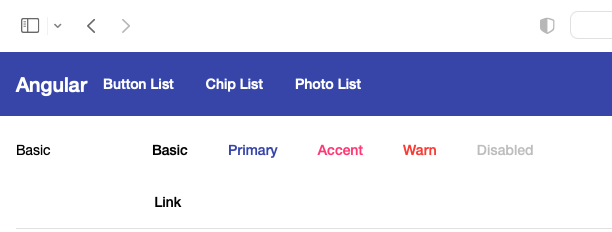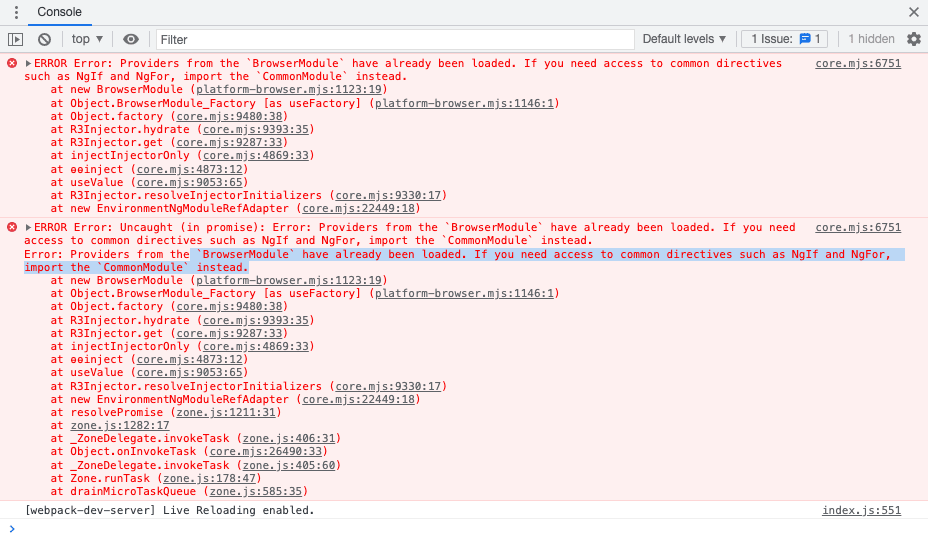这篇文章主要介绍“Angular的独立组件怎么使用”的相关知识,小编通过实际案例向大家展示操作过程,操作方法简单快捷,实用性强,希望这篇“Angular的独立组件怎么使用”文章能帮助大家解决问题。
对于已有的组件,我们可以在@Component()中添加standalone: true的标识,然后我们可以在没有@NgModule()的情况下直接使用imports导入其他模块了。
如果是新建组件,可以使用ng generate component <name> --standalone的命令,直接创建一个独立组件, 例如:
ng generate component button-list --standalone
@Component({
selector: 'app-button-list',
standalone: true,
imports: [
CommonModule,
],
templateUrl: './button-list.component.html',
styleUrls: ['./button-list.component.scss']
})
export class ButtonListComponent implements OnInit我们可以在imports中添加已有的模块,以MatButtonModule为例:
imports: [ CommonModule, MatButtonModule, ],
这样子我们就可以在ButtonListComponent中使用MatButtonModule的mat-button组件了:
<button mat-button>Basic</button> <button mat-button color="primary">Primary</button> <button mat-button color="accent">Accent</button> <button mat-button color="warn">Warn</button> <button mat-button disabled>Disabled</button> <a mat-button href="https://damingerdai.github.io" rel="external nofollow" target="_blank">Link</a>
效果图:

第一步, 将AppComponent设置为独立组件:
@Component({
selector: 'app-root',
templateUrl: './app.component.html',
styleUrls: ['./app.component.scss'],
standalone: true,
})
export class AppComponent {
...
}第二步,将AppModule的imports中的导入的模块加入到AppComponent的imports中,但是有两个模块例外: BrowserModule和BrowserAnimationsModule。
如果导入的话,可能会导致** BrowserModule have already been loaded. If you need access to common directives such as NgIf and NgFor, import the CommonModule instead.**的问题:

第三步,删除app.module.ts文件
最后一步, 将main.ts中的:
import { platformBrowserDynamic } from '@angular/platform-browser-dynamic';
platformBrowserDynamic().bootstrapModule(AppModule)
.catch(err => console.error(err));改为:
bootstrapApplication(AppComponent).catch(err => console.error(err));
这样子我们就实现了使用独立组件启动Angular组件了。
我这里分别有三个独立组件: HomeComponent, ButtonListComponent 和 ChipListComponent,
然后在main.ts中创建ROUTES对象
const ROUTES: Route[] = [
{
path: '',
pathMatch: 'full',
redirectTo: 'home'
},
{
path: 'home',
component: HomeComponent
},
{
path: 'button',
loadComponent: () =>
import('./app/button-list/button-list.component').then(
(mod) => mod.ButtonListComponent
),
},
{
path: 'chip',
loadComponent: () =>
import('./app/chip-list/chip-list.component').then(
(mod) => mod.ChipListComponent
),
},
];其中ButtonListComponent和ChipListComponent使用loadComponent去实现路由懒加载。
最后在bootstrapApplication的第二个参数中使用providers注册RouterModule好了。
bootstrapApplication(AppComponent, {
providers: [
importProvidersFrom(RouterModule.forRoot([...ROUTES])),
],
}).catch(err => console.error(err));效果图:

当我们想要启动Angular应用的时候,可能需要注入一些值或者服务。 在bootstrapApplication, 我们可以通过providers来注册值或者服务。
比如,我有一个获取图片的url,需要注入到PhotoService中:
bootstrapApplication(AppComponent, {
providers: [
{
provide: 'photoUrl',
useValue: 'https://picsum.photos',
},
{provide: PhotosService, useClass: PhotosService },
importProvidersFrom(RouterModule.forRoot([...ROUTES])),
importProvidersFrom(HttpClientModule)
],
})PhotoService代码如下:
@Injectable()
export class PhotosService {
constructor(
@Inject('photoUrl') private photoUrl: string,
private http: HttpClient
) { }
public getPhotoUrl(i: number): string {
return `${this.photoUrl}/200/300?random=${i}`;
}
}关于“Angular的独立组件怎么使用”的内容就介绍到这里了,感谢大家的阅读。如果想了解更多行业相关的知识,可以关注亿速云行业资讯频道,小编每天都会为大家更新不同的知识点。
免责声明:本站发布的内容(图片、视频和文字)以原创、转载和分享为主,文章观点不代表本网站立场,如果涉及侵权请联系站长邮箱:is@yisu.com进行举报,并提供相关证据,一经查实,将立刻删除涉嫌侵权内容。